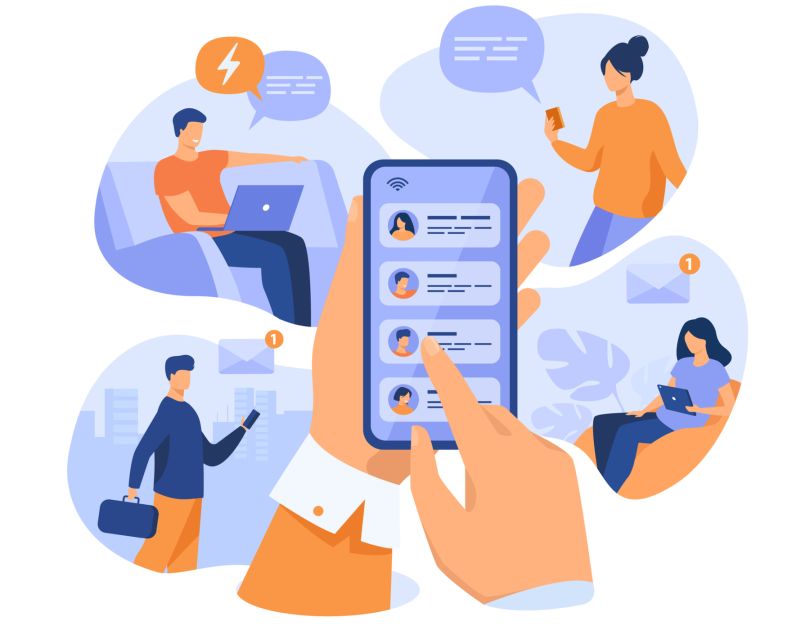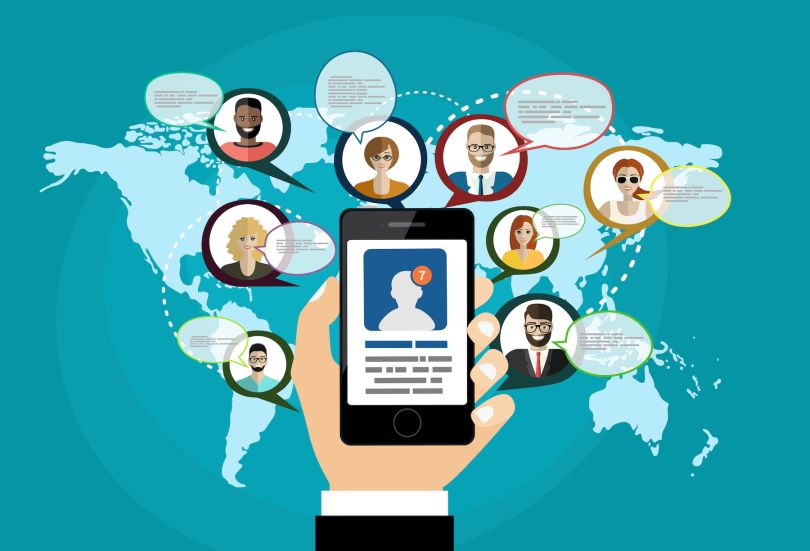For most salespeople, it’s difficult to imagine life without LinkedIn. Networking, sending Inmails and sharing content to attract buyers have become as integral to the modern sales process as email and cold calling.
Yet it wasn’t that long ago that selling on LinkedIn was met with skepticism.
Ralf VonSosen still remembers the curious glances he received for running a LinkedIn booth at a London Salesforce conference just eight years ago. At the time, VonSosen was working as the head of marketing for LinkedIn’s new Sales Solution team. Social selling had yet to fully catch on in sales, and LinkedIn had positioned itself as a place for resumes — not sales pitches.
“People would come up to me and they’re like: ‘Why are you here? Are you recruiting salespeople?’ That was the mindset,” VonSosen said.
In fact, VonSosen was there to introduce the idea that LinkedIn could be more than a recruitment tool; it could be used to create relationships with buyers. But doing that required a fundamental shift in how sales reps engaged with the platform. They needed to present themselves as resources to buyers, not as candidates for employers.
“It was all about, How do you make your LinkedIn profile help the customer?’” said VonSosen, who now works as the CMO and SVP of sales at Rever.
The approach was grounded in social sales methodology, a framework that helped to inform LinkedIn Sales Navigator and change how salespeople engaged with the social media website.

The First Step Was Incentivizing the Right Behaviors
Before LinkedIn set out to build a sales tool, it needed to determine what sales activity should look like on its platform.
When LinkedIn launched, it didn’t take long for salespeople to take advantage of the platform. Sales reps and recruiters were its two most active groups of outbound users, according to Mike Derezin, LinkedIn’s former VP of sales solutions and current VP of learning solutions. With it, came both good and bad behaviors.
“The first operating value of the company is members first, full stop. They didn’t want to create a platform that encouraged those bad practices.”
Koka Sexton, an early proponent of social selling, described the early days of sales on LinkedIn more like the Wild West. While some reps used it to build relationships, others disregarded social norms, firing off pitches left and right in a way that overwhelmed buyers. That created a challenge for LinkedIn as it tried to figure out how to balance sales activity with the user experience, said Sexton, who joined LinkedIn as its global senior marketing manager in 2013 and is now a social selling consultant.
“The first operating value of the company is members first, full stop,” Sexton said. “They didn’t want to create a platform that encouraged those bad practices.”
LinkedIn’s premium subscription helped to provide some balance, as reps had to pay for the service to increase the amount of Inmails and connection requests they could send. It also included TeamLink, a feature that enabled reps to see what connections their colleagues had and use those relationships to sell.
Encouraging reps to build professional relationships with buyers before pitching them became a strategy LinkedIn could promote, Derezin said. It served as a natural evolution of the platform’s purpose as a professional networking website.
Soon, the other features LinkedIn offered — like the ability to post content and engage with other users — fell into place to shape a social selling methodology.
Finding success in social selling required posting valuable content for your buyers, engaging with other people’s content and then using those interactions to make connections with prospects, Sexton said.
Incorporating Social Sales Methodology Into LinkedIn Sales Navigator
If there’s a blueprint for how LinkedIn Sales Navigator works, it can be found in the Social Selling Index.
The index was created early on in the development of Sales Navigator and consisted of four behaviors that LinkedIn wanted to encourage on its platform to facilitate sales, according to Keith Richey, the company’s senior director of sales solutions. The activities would be familiar to anyone who engages in social selling today.
“The extent to which a user of LinkedIn and Sales Navigator did these four things resulted in a score that many of our customers found was correlated with successful sales outcomes.”
It includes creating a professional brand on LinkedIn, researching buyers to find the right people at a company to connect with, engaging buyers with insights and using those relationships to gain warm intros.
“The extent to which a user of LinkedIn and Sales Navigator did these four things resulted in a score that many of our customers found was correlated with successful sales outcomes,” Richey said.
LinkedIn Sales Navigator launched in 2014 with features that encourage those behaviors. This includes the ability to conduct advanced searches to find buyer profiles within a company, tracking employee updates and changes within a company and logging engagement activity into the CRM.
Still, sales leaders needed some convincing. Sales was still primarily done through email and phone calls. The earliest marketing efforts revolved around changing how salespeople sold, which meant eliminating cold calling and volume sales, VonSosen said.
VonSosen and Sexton hosted and attended a series of workshops, panels and conferences to train reps on how to present themselves on LinkedIn, create relationships and act as micro marketers.
The goal was to help reps see value in developing a more personal approach to sales, and Sales Navigator helped to regulate and measure that behavior on LinkedIn.
“With Sales Navigator and LinkedIn, it keeps the relationship very professional,” VonSosen said. “That’s a critical role that LinkedIn has played. It has established what the norm is that we’re all comfortable talking about at the professional level.”

Changing the Ways Salespeople Engage With Prospects
As VonSosen looks to the future of sales, he worries that the golden days of social selling may be over.
He sees some of the same problems that had existed with phone and email — the volume of outreach and impersonal approach — starting to persist on LinkedIn. People are using third-party tools to mine the database and spam people with connection requests, drowning out genuine connections.
“We founded a new discipline, a new skill within selling.”
Buyers have become jaded, VonSosen said.
“In the early days, there was this big aha! moment, where it was like: ‘Hey, this guy’s your cousin! Thanks for connecting me with him,’” VonSosen said. “I’m not sure that exists anymore.”
To address that, Richey said LinkedIn has been investing in ways to increase transparency for buyers and help sellers establish more trusted relationships. Meanwhile, the ability to connect with buyers virtually through LinkedIn has become more important than ever due to COVID-19, Richey added.
Whatever the future holds, LinkedIn has forever changed sales. VonSosen believes tools like LinkedIn Sales Navigator helped to legitimize social selling as a sales discipline, bringing it on par with other strategies like the challenger sale and solution selling.
“We founded a new discipline, a new skill within selling,” VonSosen said. “We brought [social media] into the general sales motion and gave salespeople the opportunity to present themselves as subject matter experts. Now they can have that credibility to come to the table.”




